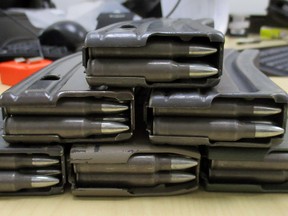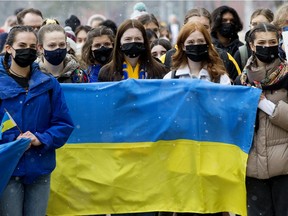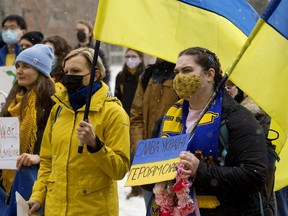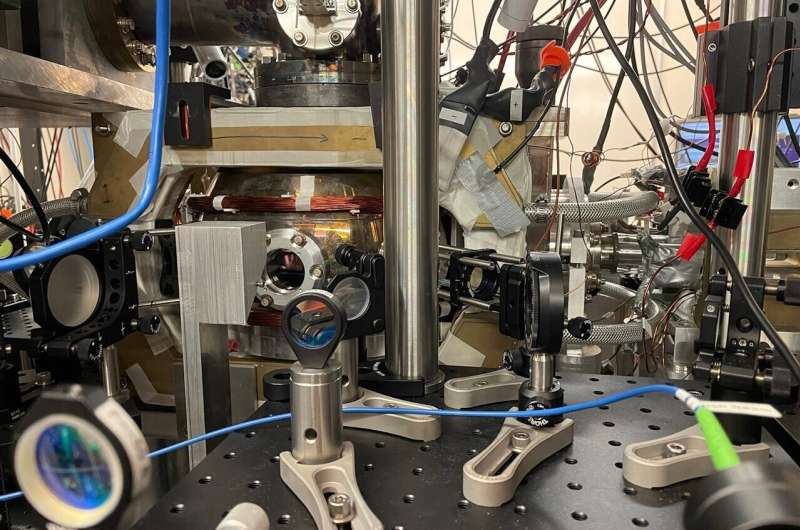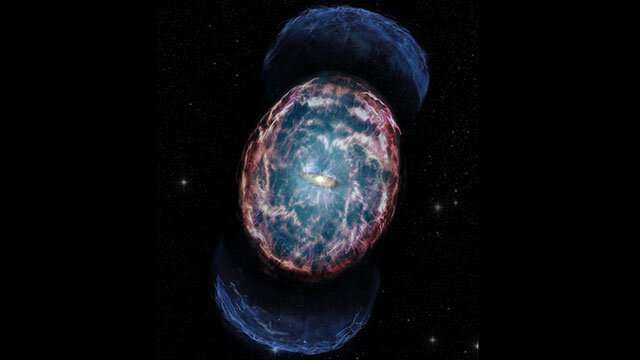California-based Viasat announced on Monday that it believes "a cyber event" disrupted its satellite internet service in Ukraine.
"Viasat is experiencing a partial network outage — impacting internet service for fixed broadband customers in Ukraine and elsewhere on our European KA-SAT network," the company told CNBC.
The Viasat outage began on Feb. 24, the day Russia invaded Ukraine.
Elon Musk, CEO of Viasat rival SpaceX, said his company's service is "active in Ukraine," with "more terminals en route" to provide internet access to the country.

Viasat said Monday that it believes "a cyber event" disrupted its satellite-internet service in Ukraine, with an ongoing outage under investigation.
"Viasat is experiencing a partial network outage — impacting internet service for fixed broadband customers in Ukraine and elsewhere on our European KA-SAT network," the California-based company said in a statement to CNBC.
"We are investigating and analyzing our European network and systems to identify the root cause and are taking additional network precautions to prevent further impacts while we attempt to recover service to affected customers."
The outage began on Feb. 24, the day Russia invaded Ukraine, according to the company, which said it notified "law enforcement and government partners," adding it has "no indication that customer data is involved."
It is unclear how many customers Viasat has in Ukraine, and the company declined to say how many are being affected.
Shares of Viasat were up 3.5% in midday trading Monday at about $45.
SpaceX says it is sending dishes to Ukraine

Viasat operates large satellites in geosynchronous orbit — meaning they are stationary at a point about 35,000 kilometers from Earth to maximize coverage area.
That's the traditional method of providing broadband service from space, but a number of companies are pouring funds into developing networks in low-Earth orbit that utilize hundreds or thousands of satellites — such as SpaceX's Starlink.
On Sunday, SpaceX CEO Elon Musk announced his company's service is "active in Ukraine," with "more terminals en route" to provide internet access to the country. Musk's tweet came in response to a request for Starlink support from Ukraine digital minister Mykhailo Fedorov.
Musk did not specify how many terminals — or ground antennas that connect users to the network — were being sent or when they would arrive.
SpaceX has launched 2,000 Starlink satellites to date. The company's service has around 145,000 users as of January, who pay $99 a month for the standard service or $500 a month for a premium tier.
Mitchell Clark and Loren Grush
SpaceX sent a truck full of Starlink user terminals to Ukraine, according to an image tweeted by the country’s vice prime minster, who had asked CEO Elon Musk for assistance during Russia’s invasion. Over the weekend, Mykhailo Fedorov tweeted at Musk, asking him to provide Ukraine with Starlink stations. In response, Musk said that the satellite internet service had been activated for the country and that more terminals were on their way. Today, it seems that promise has been fulfilled, with Musk responding to Fedorov’s latest tweet, “You are most welcome.”
 '
'As fighting continues in Ukrainian cities, there have been concerns that there could be cyberattacks on critical internet infrastructure, which could make it harder for news to leave the country or for people to contact loved ones. These fears were heightened following some partial outages that occurred last week.


In order to tap into the Starlink system, consumers must have a user terminal — a white flat dish that SpaceX sells directly to customers. With a clear view of the sky, the dishes can send and receive signals from any active Starlink satellites that are overhead. It’s these terminals that have been shipped to Ukraine, though it’s unclear from the photo how many there are.
Much of the infrastructure that powers satellite internet exists in space, though there is still plenty of equipment on the ground. In order to provide internet access, satellites must be able to communicate with gateways, fixed ground stations on Earth that are connected to existing fiber-optic cables.
There’s still a possibility of technical issues or cyberattacks on satellite internet like Starlink — another satellite ISP says it’s experiencing disruptions in the country thanks to a “cyber event,” according to a CNBC report.
Starlink is SpaceX’s ambitious internet-from-space initiative, aimed at launching tens of thousands of satellites to low Earth orbit to provide broadband Internet coverage to the ground below. So far, the company has nearly 2,000 active satellites in orbit. In January, SpaceX claimed during a launch livestream that it had 145,000 active users, and Musk implied in a February tweet that SpaceX has more than 250,000 user terminals in production.
Now that the dishes have arrived in Ukraine, it’s unclear exactly how they will be used or distributed, though one Twitter user posted a screenshot claiming to be using the service in Kyiv, Ukraine’s capital. The antennas do need unimpeded access to the sky, which may be difficult in a warzone. Additionally, the locations of SpaceX’s gateways aren’t explicitly public info, but internet sleuths on Reddit have found some, including one in Ukraine’s neighbor Poland.
Despite many customers having their Starlink orders delayed in the past year, some members of the Starlink subreddit have said they’d be willing to wait longer if it could help people in Ukraine. Others have asked if they’d be able to send their personal terminals to the country. It’s debatable how practical (or even feasible) these goodwill gestures would be, but it’s another example of people being willing to come together to support Ukraine.
MobileSyrup
Amid Russia’s ongoing illegal invasion of Ukraine, reports coming out of the on-defence country suggest that constant attacks have caused internet outages in some parts of the nation, disabling the country from staying connected with the rest of the world.

Ukraine’s Vice Prime Minister and Minister of Digital Transformation Mykhailo Fedorov requested SpaceX CEO Elon Musk to provide Ukrainians access to Starlink’s internet connection.
Later the same day, Musk replied to Fedorov’s appeal, stating “Starlink service is now active in Ukraine. More terminals en route.”
In a follow-up tweet, Fedorov clarified that Starlink terminals (dish) are currently on their way to Ukraine, and thanked Musk for the aid and for supporting the distraught nation. In addition, the country’s official Twitter account also thanked the billionaire for the support.
In other Starlink-related news, CEO Musk recently announced a new Starlink high-performance antenna and Premium package with speeds ranging between 150-500 Mbps.
Source: @FedorovMykhailo
(Reuters) -Ukraine on Monday said it had received donated Starlink satellite internet terminals from SpaceX, but an internet security researcher warned these could become Russian targets.

"Starlink — here. Thanks, @elonmusk," Ukraine's vice prime minister, Mykhailo Fedorov, tweeted, days after asking SpaceX's billionaire chief executive officer Elon Musk for help. Fedorov's tweet included a picture of the back of a military-looking truck, loaded with terminals.
Musk tweeted back, "You are most welcome".
The terminals look like home satellite television dishes and can provide relatively fast internet service, by residential standards, by connecting to a fleet of satellites in low orbit.
But John Scott-Railton, a senior researcher at the University of Toronto's Citizen Lab project, took to Twitter to warn the terminals could become Russian targets.
"Re: @elonmusk's starlink donation. Good to see. But remember: if #Putin controls the air above #Ukraine, users' uplink transmissions become beacons ... for airstrikes," he tweeted.
"#Russia has decades of experience hitting people by targeting their satellite communications," he added in a series of 15 tweets detailing the risks. (https://bit.ly/35BEFs2)
Musk said on Saturday that Starlink is available in Ukraine and SpaceX is sending more terminals to the country, whose internet has been disrupted due to the Russian invasion.
Fedorov thanked Ukraine’s ambassador to the United States for helping to swiftly approve the activation of Starlink in Ukraine.
One of the challenges is to install end-user terminals, which require a clear view of the sky to connect to Starlink, Tim Farrar, a consultant in satellite communications said.
As high-rise buildings can block the service, one has to go to the top of the highest building nearby to set up the antenna, he said. "That's a fairly vulnerable place to be."
"It is not going to be something that can offer a replacement for terrestrial internet on a large scale," he said.
SpaceX did not immediately respond to a Reuters request for comment.
(Reporting by Noor Zainab Hussain and Arunima Kumar in Bengaluru and Hyunjoo Jin in San Francisco; Editing by Stephen Coates)
Megan Cerullo
SpaceX founder and billionaire Elon Musk is providing free satellite-based internet service in Ukraine through his company Starlink, as Russia invades the nation and causes power outages

Starlink is a growing network of small satellites that SpaceX has been building out since 2018 to supply broadband internet access around the globe. On Monday, the Vice Prime Minister of Ukraine and minister of digital transformation, Mykhailo Fedorov, tweeted that a truck full of Starlink terminals had arrived on Ukraine soil, after he had requested them.
Fedorov had appealed to Musk in a tweet Saturday, asking him to extend Starlink's high-speed broadband internet services to the besieged country, rhetorically noting that "while you try to colonize Mars — Russia try to occupy Ukraine! While your rockets successfully land from space — Russian rockets attack Ukrainian civil people!"
Musk apparently obliged, tweeting Saturday that Starlink service was active in Ukraine and also agreeing to send more Starlink terminals to expand the country's bandwidth.
"Starlink service is now active in Ukraine. More terminals en route," Musk tweeted.
Invading Russian troops have disrupted Ukraine's internet infrastructure, making service unreliable and spotty in parts of the country.
The Starlink service, which its website bills as being "ideal for rural and remote communities" and other locales where internet connections have historically been unavailable, is expected to be more reliable than land-based systems that are currently out of service.
One Starlink terminal costs $499. The system was recently used to restore communications in remote villages in Tonga after a volcanic eruption triggered a tsunami, cutting off internet service
By Simran Kashyap | Published: Tuesday, March 1, 2022, Kyiv,

